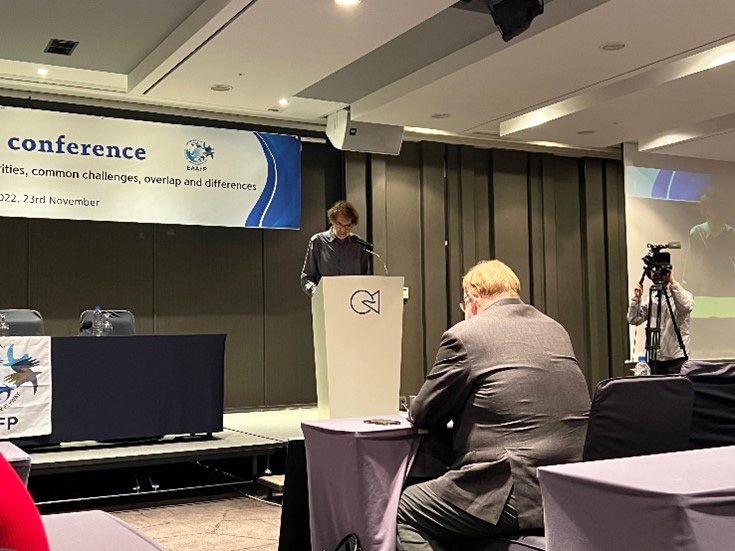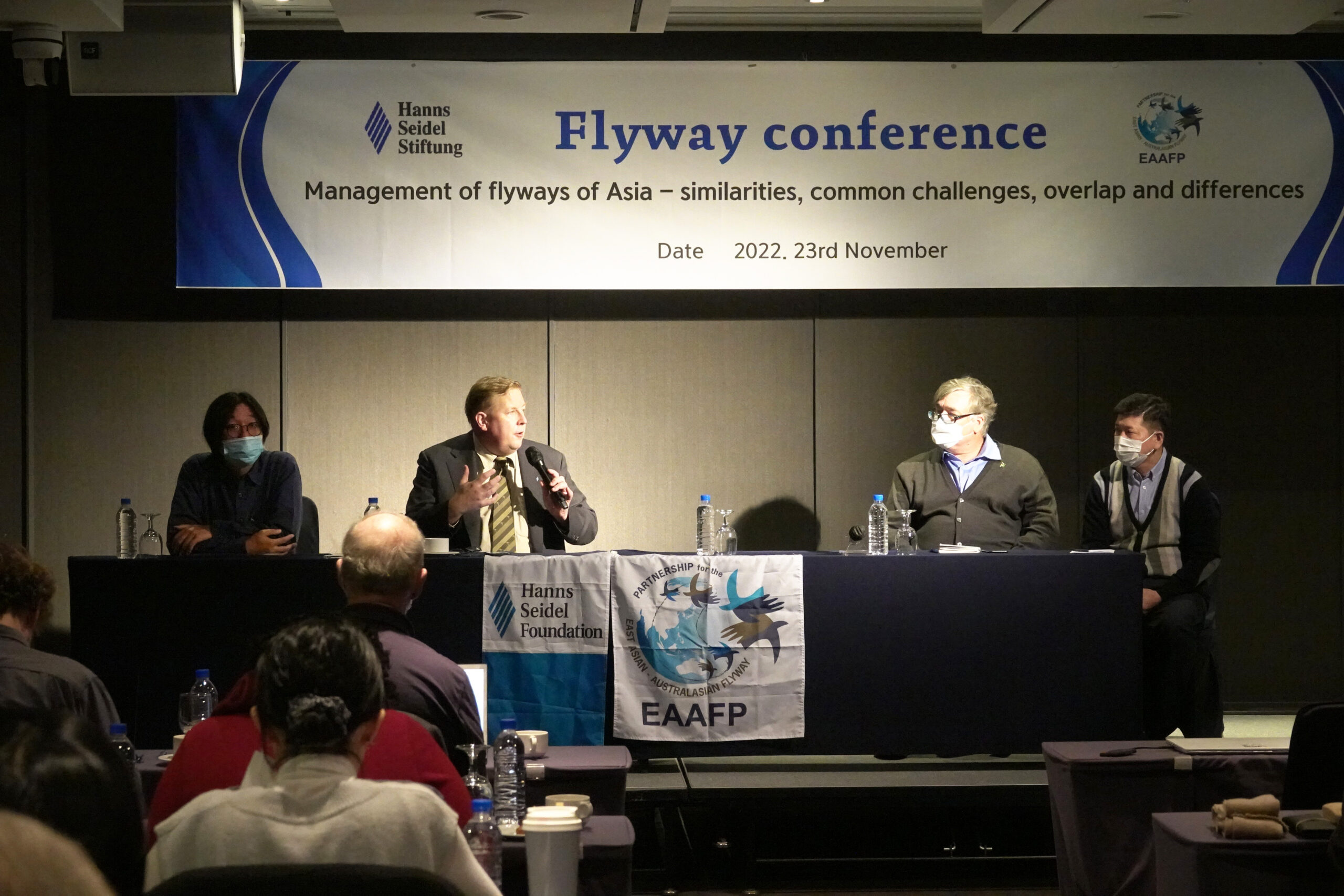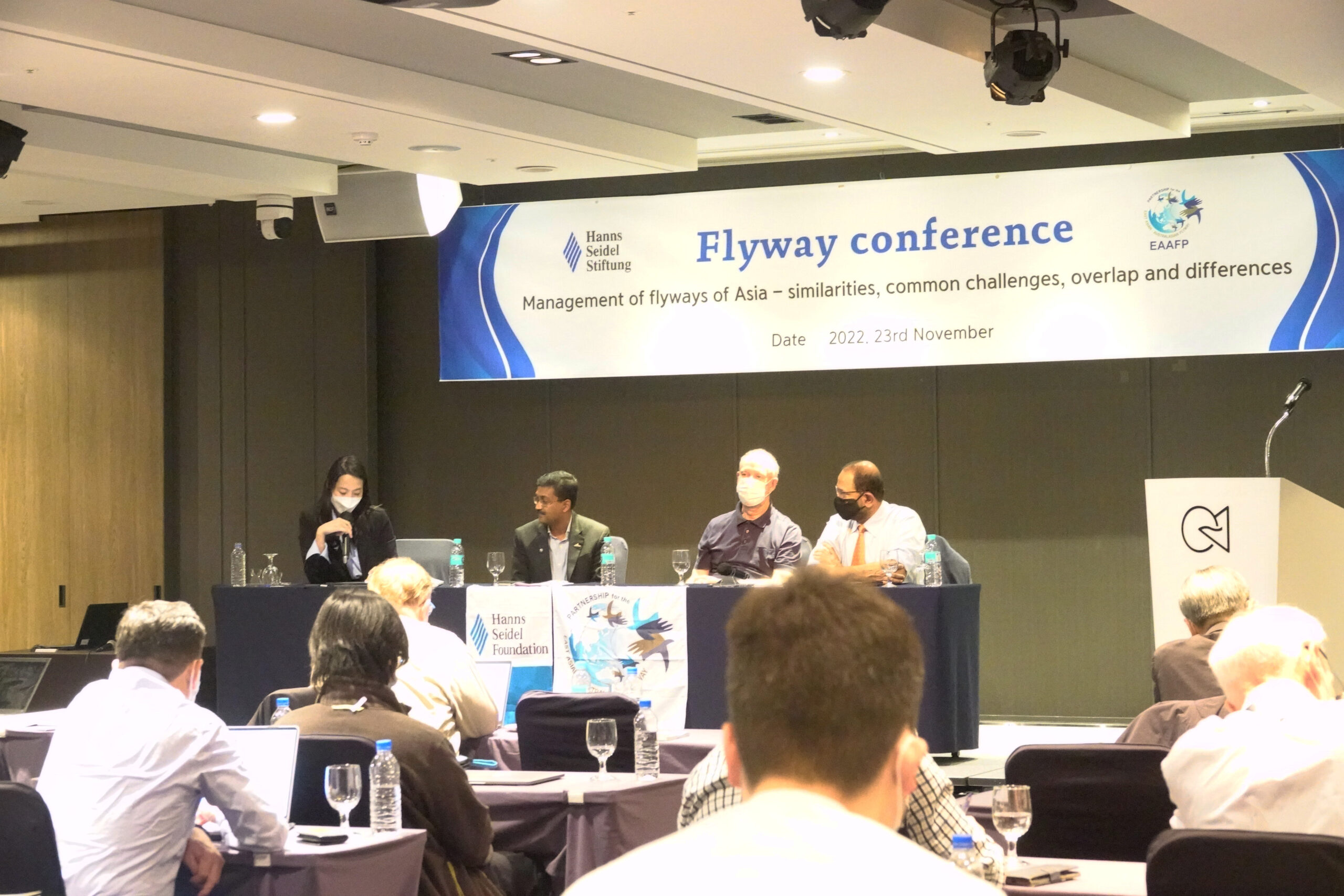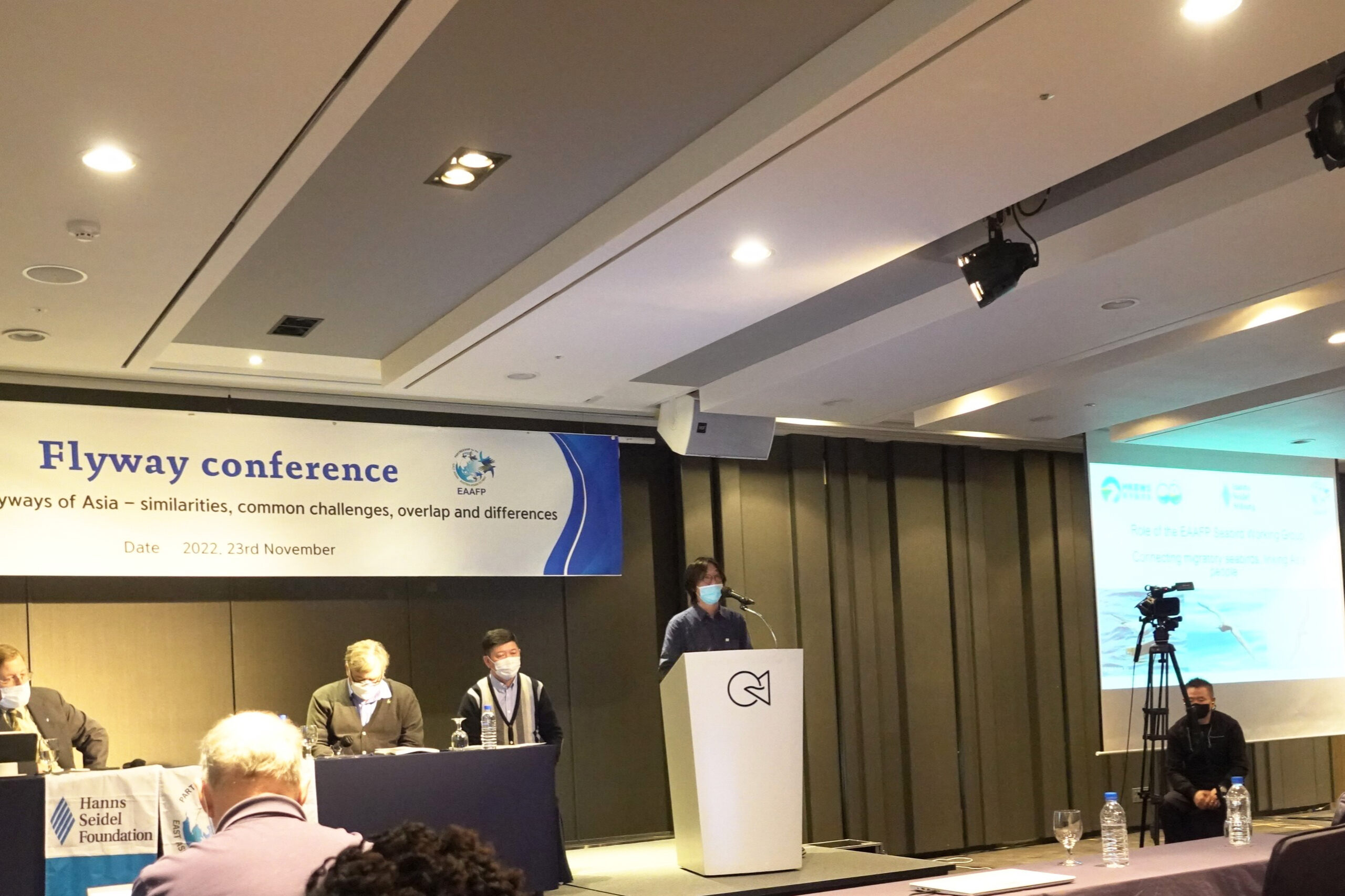
Participants of the conference © EAAFP Secretariat
On 23rd November 2022, EAAFP Partner, Hanns-Seidel Foundation (HSF) and the East Asian – Australasian Flyway Partnership (EAAFP) Secretariat jointly hosted the conference on the Management of flyways of Asia, Incheon, in a hybrid format with 60 participants. The conference aimed to share experience on conservation work in EAA Flyway for the Central Asian Flyway (CAF). Moreover, with our Partners, the Secretariat could expand networks and collaboration across flyways and assist HSF to establish a larger network of institutions to foster conservation work on biodiversity and climate issues.
The Central Asian Flyway covers a large continental area of Eurasia between the Arctic and Indian Oceans and the associated island chains. It also overlaps with the EAA Flyway., The Conservation of Migratory Species of Wild Animals (CMS), held meetings since 2005 to promote discussion to develop a collaborative framework in CAF. The African-Eurasian Waterbird Agreement (AEWA) engaged in the framework for the CAF to support the CAF Action Plan since 2012.

Opening remarks by Mr. Doug Watkins, Chief Executive of EAAFP © EAAFP Secretariat
The conference, with the theme of “Management of flyways of Asia – similarities, common challenges, overlap and differences”, started with the Opening Remarks in which Mr. Doug Watkins, Chief Executive of EAAFP, and Dr. Bernhard Seliger, Representative of HSF Korea, gave opening remarks. They highlighted the purpose of co-hosting the event, future for CAF and the relationship between the two organizations. Mr. Doug Watkins shared a brief history of conservation efforts in the CAF region and his hope for liaison with CAF range countries. Dr. Bernhard Seliger mentioned the conference would contribute to sharing experiences between EAAF and CAF, and would also be the forum to assemble experts worldwide. He emphasized the importance of continuous information exchanges in the future through different chances such as organizing workshops.
Following the remarks, Dr. Sergey Sklyarenko, the Conservation and Science Director of the Association for the Conservation of Biodiversity of Kazakhstan (ACBK), Almaty, Republic of Kazakhstan, delivered his presentation on the importance of the CAF, conservation of habitats of migratory birds and importance of international collaboration for migratory bird conservation in the CAF. His presentation under the theme of “Flyway conservation: for birds and biodiversity”, mentioned specific research methodologies like banding and satellite tracking, as well as the transmitter method. The presentation emphasized that international efforts, such as joint research and cooperation, are needed.

On-site speakers of the first session and moderator Dr. Bernhard Seliger © EAAFP Secretariat
The conference’s first session mainly focused on sharing experiences from flyways, especially EAAF, under the theme of “Key lessons from cooperation in EAAFP”, with the moderation of Dr. Seliger. Dr. Nial Moores’ presentation “Key Lessons of Collaboration with the EAAFP – From the Perspective of a Korean NGO” shared his experience from DPRK Wetlands Project in Rason Ramsar Site and Flyway Network Site, Mundok Migratory Bird Reserve.
The second speaker, Dr. Who-Seung Lee, shared his presentation“Waterbird Conservation and Impacts of Offshore Wind Farms in ROK” and stressed the importance of a database for the coastal and intertidal wetlands, especially before the construction of wind farms. The third speaker, Mr. Yat-Tung Yu’s presentation “Cooperation in EAAF – Black-faced Spoonbill and Seabirds” shared possible cooperation methods like increasing public engagement, mentioning his former research. Lastly, Dr. Gombobaatar Sundev, shared the status and threats of the flyway in Mongolia with the title “Bird Research, Conservation, and Birding in Mongolia”. In the Q&A session for the 1st session, the speakers answered participants’ questions about their research subject, the methodology, and their experience of international cooperation.

On-site speakers of the second session and moderator Ms. Hyeseon Do © EAAFP Secretariat
In the second session, Ms. Hyeseon Do, Programme Officer of EAAFP Secretariat moderated and engaged in both presentation and Q&A session. The speakers for the 2nd session were Mr. Spike Millington from International Crane Foundation, Dr. Taej Mundkur representing Wetlands International, Dr. Suresh Kumar from Wildlife Institute of India, while Ms. Phan Binh Minh of Viet Nam Nature and Biodiversity Conservation Agency joined virtually. The speakers were also involved in the discussion as panelists.
The speakers stressed the importance of joint conservation activities, especially mentioning the hardships that the CAF is currently facing. The first speaker for the second session, Mr. Spike Millington delivered his speech on “Flyway Frameworks around the World: Lessons for CAF” which proposed the message ‘Keep it simple, remove barrier, and keep communicating’. The second speaker, Dr. Taej Mundkur, shared his presentation about “Waterbird Population Size and Trends in Central Asian Flyway” which insisted that the gap of information in CAF region can be filled both by citizen scientists and existing information from EAAF countries. The third speaker, Dr. R. Suresh Kumar did a presentation under the theme “Cooperation in Central Asian Flyway – focused on key species” and shared threats to waterbirds in India and the effort of India to conserve the birds. The last speaker, Ms. Phan Binh Minh, introduced about current waterbird conservation status in Vietnam with potential opportunities in the future, while also suggesting the importance of developing policies for conservation, under the theme “Flyways Management and Migratory Birds Conservation in Viet Nam”. In the Q&A session for the second session, the speakers answered questions from participants based on their specialized area and their research outcomes.

Mr. Yat-tung Yu, delivering his presentation © EAAFP Secretariat
The last session is the open discussion, moderated by Dr. Choi HyunahThe participants speakers shared their opinions, based on the contents of presentations. Researchers from the CAF region, especially Uzbekistan, shared their joint research outcome in the region. Questions from audiences also generated an active exchange of ideas. The conference ended with a networking dinner that provided further exchange between the participants and reassuring the importance of cooperation between the flyways and people living in the region.
For more information, please click the links below
Hanns-Seidel Foundation’s article here.
CMS Central Asian Flyway Page here.




